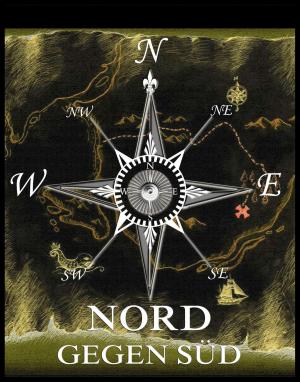Summa Theologica Part I ("Prima Pars")
Nonfiction, Religion & Spirituality, Philosophy, Religious, Theology, Christianity| Author: | St. Thomas Aquinas | ISBN: | 9783849620912 |
| Publisher: | Jazzybee Verlag | Publication: | July 21, 2012 |
| Imprint: | Language: | English |
| Author: | St. Thomas Aquinas |
| ISBN: | 9783849620912 |
| Publisher: | Jazzybee Verlag |
| Publication: | July 21, 2012 |
| Imprint: | |
| Language: | English |
The Summa Theologiae (Latin: Compendium of Theology or Theological Compendium; also subsequently called the Summa Theologica or simply the Summa, written 1265-1274) is the best-known work of Thomas Aquinas (c.1225-1274), and although unfinished, "one of the classics of the history of philosophy and one of the most influential works of Western literature." It is intended as a manual for beginners in theology and a compendium of all of the main theological teachings of the Church. It presents the reasoning for almost all points of Christian theology in the West. The Summa's topics follow a cycle: the existence of God; Creation, Man; Man's purpose; Christ; the Sacraments; and back to God. (courtesy of wikipedia.com). This is part 1, 'Prima Pars'. Aquinas's greatest work was the Summa, and it is the fullest presentation of his views. He worked on it from the time of Clement IV (after 1265) until the end of his life. When he died, he had reached Question 90 of Part III (on the subject of penance). What was lacking was added afterwards from the fourth book of his commentary on the Sentences of Peter Lombard as a supplementum, which is not found in manuscripts of the thirteenth and fourteenth centuries. The Summa was translated into Greek (apparently by Maximus Planudes around 1327), Armenian, many European languages, and Chinese. It consists of three parts. Part I treats of God, who is the "first cause, himself uncaused" (primum movens immobile) and as such existent only in act (actu) - that is, pure actuality without potentiality, and therefore without corporeality. His essence is actus purus et perfectus. This follows from the fivefold proof for the existence of God; namely, there must be a first mover, unmoved, a first cause in the chain of causes, an absolutely necessary being, an absolutely perfect being, and a rational designer.
The Summa Theologiae (Latin: Compendium of Theology or Theological Compendium; also subsequently called the Summa Theologica or simply the Summa, written 1265-1274) is the best-known work of Thomas Aquinas (c.1225-1274), and although unfinished, "one of the classics of the history of philosophy and one of the most influential works of Western literature." It is intended as a manual for beginners in theology and a compendium of all of the main theological teachings of the Church. It presents the reasoning for almost all points of Christian theology in the West. The Summa's topics follow a cycle: the existence of God; Creation, Man; Man's purpose; Christ; the Sacraments; and back to God. (courtesy of wikipedia.com). This is part 1, 'Prima Pars'. Aquinas's greatest work was the Summa, and it is the fullest presentation of his views. He worked on it from the time of Clement IV (after 1265) until the end of his life. When he died, he had reached Question 90 of Part III (on the subject of penance). What was lacking was added afterwards from the fourth book of his commentary on the Sentences of Peter Lombard as a supplementum, which is not found in manuscripts of the thirteenth and fourteenth centuries. The Summa was translated into Greek (apparently by Maximus Planudes around 1327), Armenian, many European languages, and Chinese. It consists of three parts. Part I treats of God, who is the "first cause, himself uncaused" (primum movens immobile) and as such existent only in act (actu) - that is, pure actuality without potentiality, and therefore without corporeality. His essence is actus purus et perfectus. This follows from the fivefold proof for the existence of God; namely, there must be a first mover, unmoved, a first cause in the chain of causes, an absolutely necessary being, an absolutely perfect being, and a rational designer.















